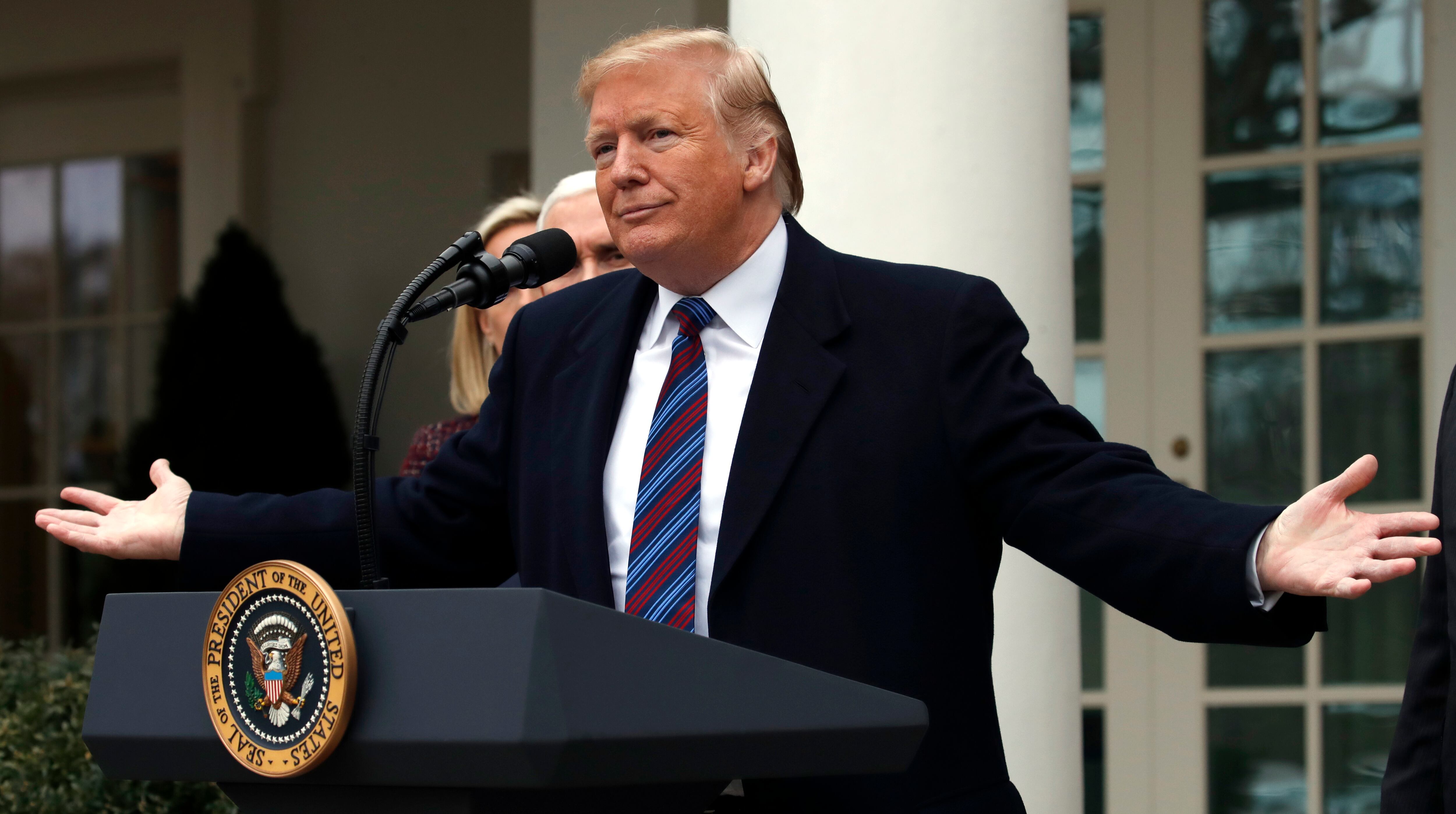President Donald Trump’s consideration of declaring a national emergency to fund a border wall carries significant risk for American war fighters, undoing the positive impact the administration and Congress have made on military readiness.
Declaring an emergency for a chronic challenge to leverage defense funds could hyper-politicize the defense budget process. At best, this could set a worrisome precedent, inviting future presidents to use this tactic to raid defense resources for congressionally unsupported priorities. At worst, members of Congress leery of strong defense spending or who wish to cut it to mitigate budget deficits may see this as an opportunity to return to Budget Control Act caps, crippling military readiness.
Either way, the dangers to capabilities and readiness are too great.
The National Defense Authorization Act and the defense appropriations bill came from a yearslong effort to study, develop and fund the policies and programs to meet our National Defense Strategy. Through budget submissions, hearings, draft laws, bills and amendments, this process and these pieces of legislation give the Pentagon and, importantly, the defense-industrial base direction on where and when to invest. Industry needs this relative certainty to provide the best for the war fighter at an affordable cost to the taxpayer.
Additionally, a border declaration will upend the first budget passed under normal order in a decade, and likely hit 2019 defense legislation negatively. The resulting uncertainty could prompt the Pentagon and the defense industry to reduce investments to hedge risk.
The impact on war fighters over time will be profound: less innovative capabilities, costlier systems and an increasingly fragile defense-industrial base. And this does not consider the potential return to onerous spending caps.
RELATED

The 2011 Budget Control Act set limits from fiscal years 2013 through 2021. When congressional negotiators couldn’t agree upon additional spending reductions, sequestration took effect. This forced severe cuts to readiness as fighter wings were grounded, ships remained in ports and battalions lost their national training center rotations. Additionally, thousands of innovative defense companies had their contracts frozen, delayed or canceled. Recently, the Center for Strategic and International Studies found BCA cuts contributed to more than 11,000 companies leaving the defense sector since 2011.
Congress acted to reduce the negative effect of sequestration over recent years, increasing caps and letting the Department of Defense manage the cuts across programs instead of cutting every program by a defined percentage. Unfortunately, BCA cuts remain in place for 2020 and 2021. Without action, cuts will exceed $100 billion, erasing readiness gains and damaging critical acquisitions.
Some in Congress might use this standoff as justification for allowing BCA caps to take effect; some may because they’ll view a smaller defense budget as less able to fund an initiative the president deems important but that Congress won’t fund. Others may see sequestration across the government as a way to reduce deficits.
Critically, using appropriated DoD funding for a border wall may ultimately fail because it requires specific congressional approval. Though Congress gives the DoD flexibility to move funding through “below threshold reprogramming” actions, it requires the DoD to request approval for large funding transfers and “new starts” — programs Congress has not previously authorized. Any transfer above $15 million is considered above threshold.
For military construction, the DoD must submit requests for any increase exceeding 25 percent of the project cost or $2 million, whichever is lower; this puts border wall reprogramming above threshold. As it refuses to appropriate wall funding, it is unlikely Congress would approve such a request. Even Rep. Mac Thornberry, R-Texas, ranking member of the House Armed Services Committee, said: “I am opposed to using defense dollars for nondefense purposes.”
This administration and Congress have worked together more than two years to fix readiness shortfalls caused by the 2013 sequester. Increased DoD funding let the Air Force increase flying hours, the Navy increase steaming hours, the Army increase rotations at the training centers and the Marines buy back one infantry battalion. These actions enhance readiness and prepare for future fights. In both readiness and acquisition, the down payment Congress and the administration make put the DoD on a path to meet the objectives in the 2017 National Defense Strategy. A return to sequester would rapidly negate the progress made, reduce the DoD’s capabilities and capacity to execute the National Defense Strategy, and imperil war fighters in ongoing and future operations.
Undoing hard-won defense spending progress outweighs any potential benefits. Given the future risks posed by precedent and immediate risks posed by a potential return to budget caps, the administration should resist declaring an emergency on the border to access DoD resources.
Retired Gen. Herbert J. “Hawk” Carlisle is the president and CEO of the National Defense Industrial Association. He served in the U.S. Air Force for 39 years. He previously served as the head of Air Combat Command at Langley Air Force Base, Va.








